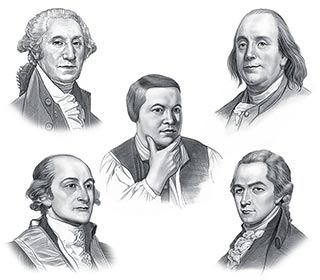Founding of the Rhode Island Colony
When was the colony of Rhode Island founded? The Rhode Island Colony was founded in 1636 by Roger Williamsand other colonists, such as Anne Hutchinson at Providence.
The Naming of the Rhode Island Colony
Named "Roodt Eylandt" by Adrian Block, the Dutch explorer. The meaning of the name is "red island" referring to the red clay that lined the shore. The name was later changed when the area came under British rule.
Year Founded: 1636 by Roger Williams and others, at Providence
Major Towns / Cities: Providence
Major Industries: Agriculture (livestock, dairy, fishing). Fish included cod, mackerel, herring, halibut, hake, bass and sturgeon and whales. Manufacturing (lumbering). Breweries and distilleries producing rum
Geography: Flat rolling hills and lowlands. The basic geography of New England consisted of mountains thick with trees, rivers and poor rocky soil that was difficult to farm and unsuitable for crops
Climate: New England was the coldest of the three regions, mild and short summers leading to long, cold winters but less disease than in the warmer colonies
Religion: There was no religious freedom in the areas inhabited by the Puritans as they did not tolerate any other form of religion. Refer to Religion in the Colonies
Natural Resources: Fish, whales, forests. Imported agricultural products from other colonies. Farming was difficult for crops like wheat because of the poor soil but corn, pumpkins, rye, squash and beans were raised
Economics and Trade: Concentrated in manufacture and focussed on town life and industries such as ship building and the manufacture and export of rum. Industries and trade in the New England colonies included fish, whale products, shipping, shipbuilding, timber products, furs, maple syrup, copper, livestock products, horses, rum, whiskey and beer
Government: In 1775 Rhode Island was governed as a Charter Colony.
The first Colonists arrived from England aboard the Ark and the Dove
Original Name: The original name of the colony was the Colony of Rhode Island and Providence Plantations, later Rhode Island
In towns along the coast, the colonists made their living fishing, whaling, and shipbuilding. Whale oil was a valuable resource as it could be used in lamps.
Farming was difficult for crops like wheat because of the poor soil but corn, pumpkins, rye, squash and beans were planted.
In 1636 Roger Williams, a religious exile from Massachusetts, was the founder of Providence as a Rhode Island settlement and was followed by Anne Hutchinson
In 1638 the Portsmouth compact was signed
In 1663 King Charles II granted the royal Charter of Rhode Island
Fish, timber, furs, ships and livestock
By 1761, Rhode Island, had 22 distilleries and three sugar refineries
The Colony became a state on May 29, 1790.
